
Trees Around Las Vegas, Vegetation Around Las Vegas
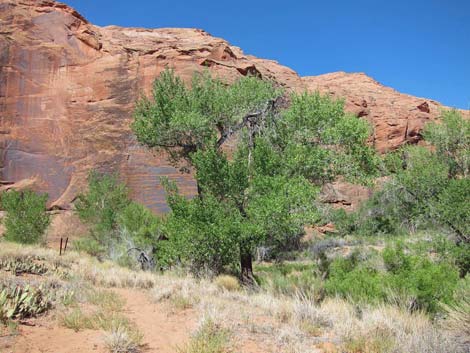 |
General: Fremont's Cottonwood (Populus fremontii) is a tall, stately tree with a rounded top, heart-shaped leaves with lobed margins, and thick, gray, furrowed bark. The leaf petiole (leaf stem) is laterally flattened (shaped like a knife blade) rather than round, which allows the leaves to flutter in a breeze. Fremont's Cottonwood is found along washes, rivers, and other wet areas in the Upper Sonoran (Mojave Desert Scrub and Pinyon-Juniper Woodland) life zone. Around Las Vegas, look for Fremont's Cottonwood trees around springs and along streams. Good places to see this species include Corn Creek at Desert National Wildlife Refuge, Wheeler Camp Spring at Red Rock Canyon, and at several of the remote springs in Gold Butte National Monument. |
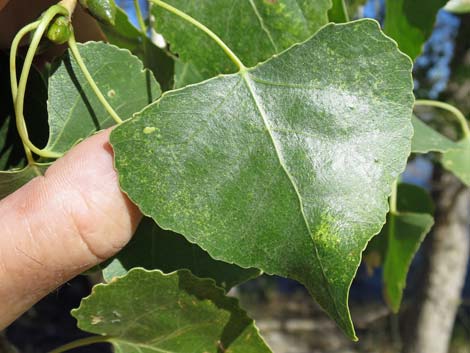 |
Family: Willow (Salicaceae). Other Names: Plant Form: Tall, stately tree with flat to rounded top. Height: 40 ft (to 90 ft). Trunk: Tall, stout, with deeply furrowed, gray bark. Leaves: Heart shaped to triangular leaves, glossy green. Margins described at "crenately serrate," which basically translates to slightly lobed with lobes that can be somewhat pointed. The leaves produce "fall colors" at the end of summer. |
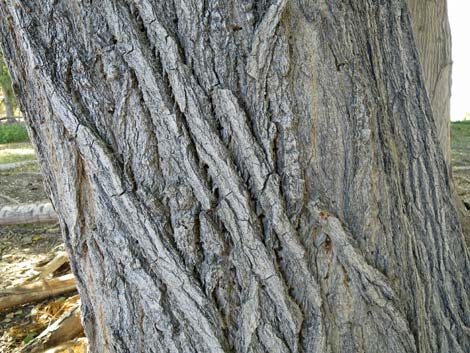 |
Flowers: Cottonwood trees are dioecious, meaning they have separate male and female trees. Inflorescence is always a hanging catkin. Male catkins are a dense cluster of staminate flowers to about 3-inches long. Male flowers are a small, cup-shaped disc with many stamens and anthers. Female catkins are a sparse cluster of pistillate flowers to about 4-inches long. Female catkins elongate to produce a long (to several inches) string of green capsules that contain developing seeds and cottony fibers.
Seeds: Small seeds tufted with cottony hairs that ride on the wind. Distribution: Washes, river corridors, springs from west Texas to California. Elevation: To about 6,000 feet. Comments: |
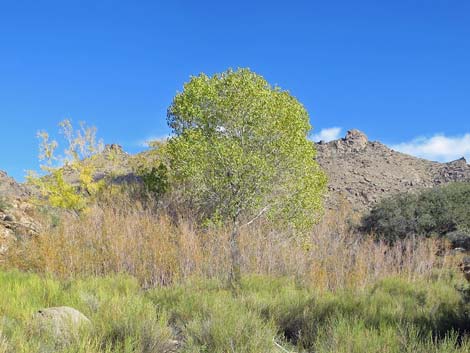 Willow Spring, southern Gold Butte National Monument |
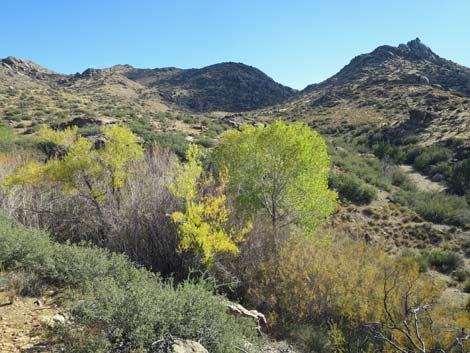 Willow Spring, southern Gold Butte National Monument |
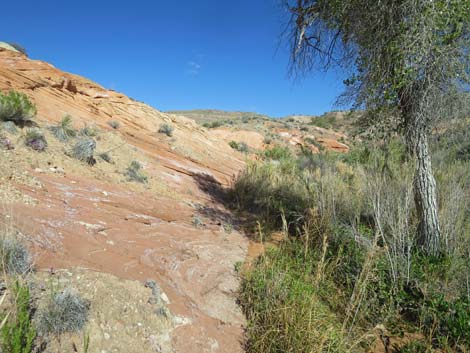 Cottonwood at a desert spring in Gold Butte National Monument |
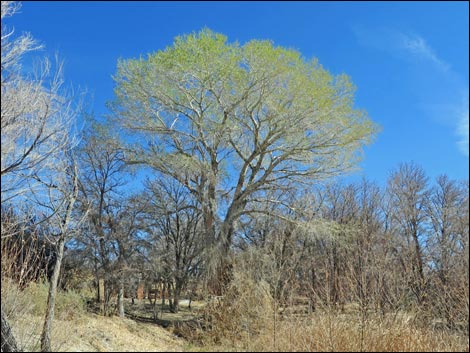 Fremont's Cottonwood with fresh leaves during spring |
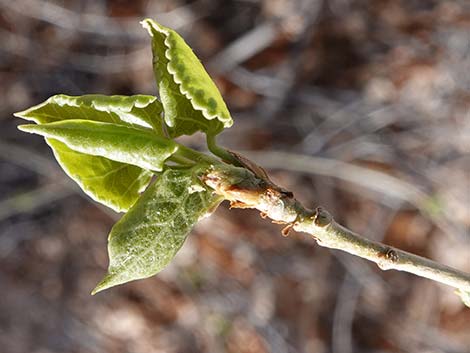 Fresh leaves in the spring sprout from branch tips |
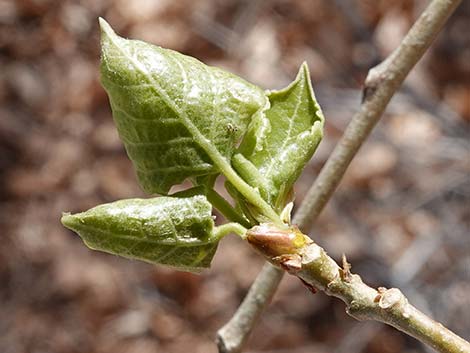 Fresh leaves in the spring sprout from branch tips |
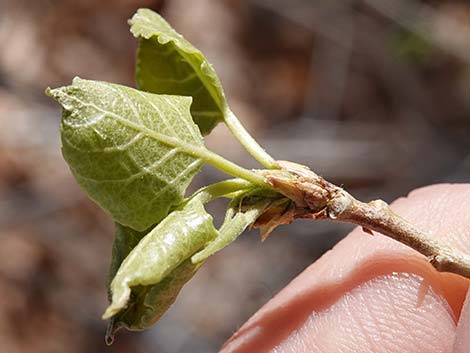 Fresh leaves in the spring sprout from branch tips |
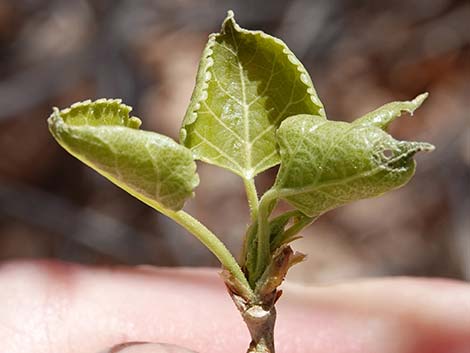 Fresh leaves in the spring sprout from branch tips |
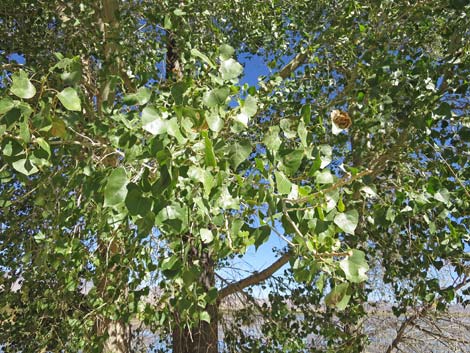 |
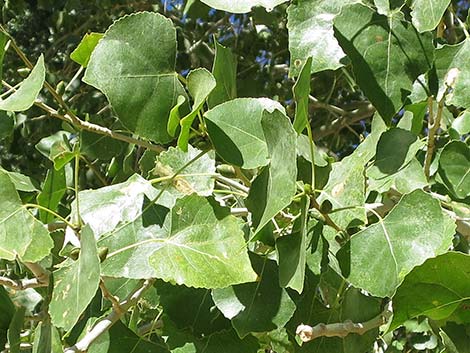 |
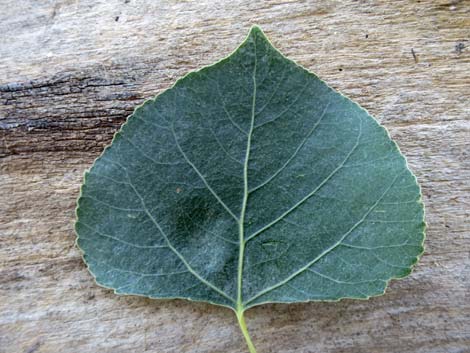 Leaf, dorsal surface |
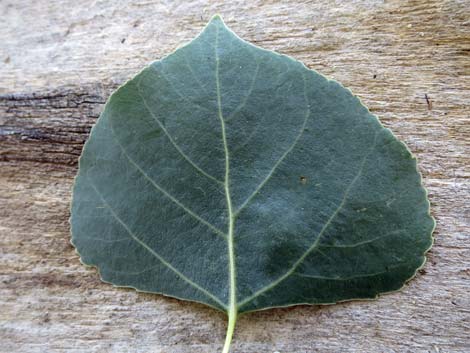 Leaf, ventral surface |
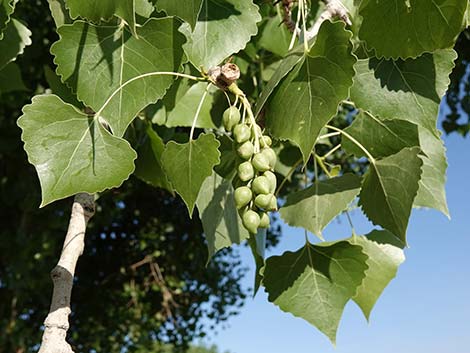 Fremont's Cottonwood capsules contain the seeds with cottony hairs |
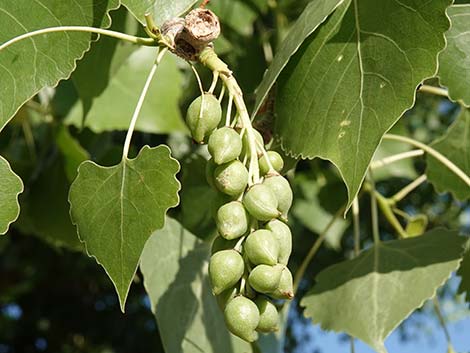 Fremont's Cottonwood capsules contain the seeds with cottony hairs |
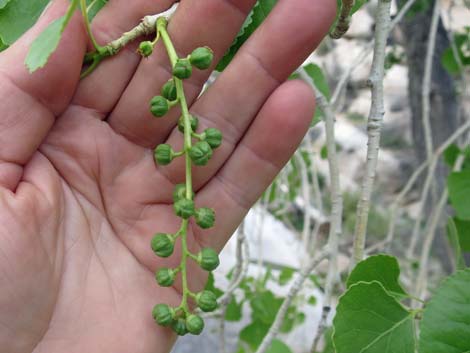 Fremont's Cottonwood capsules (female parts) |
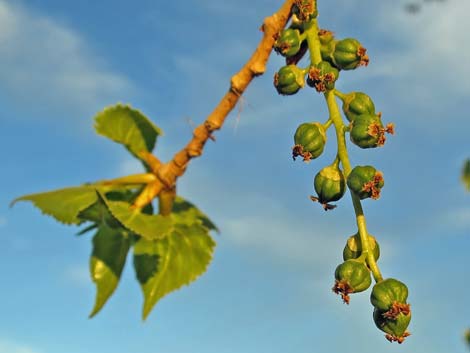 Fremont's Cottonwood capsules (female parts) |
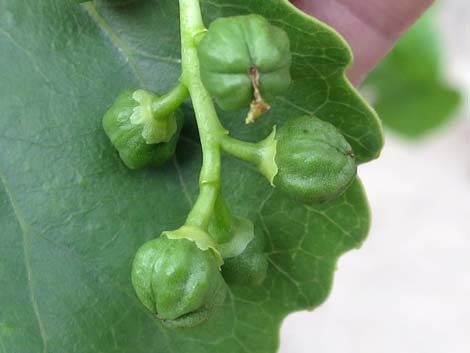 Fremont's Cottonwood capsules (female parts) |
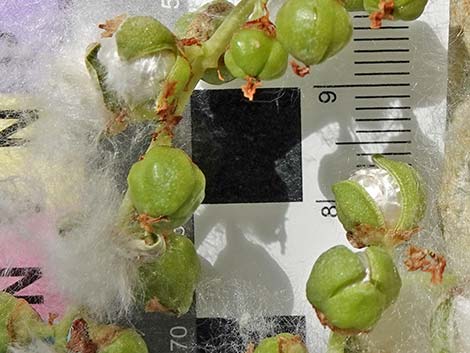 Fremont's Cottonwood capsules opening (female parts) |
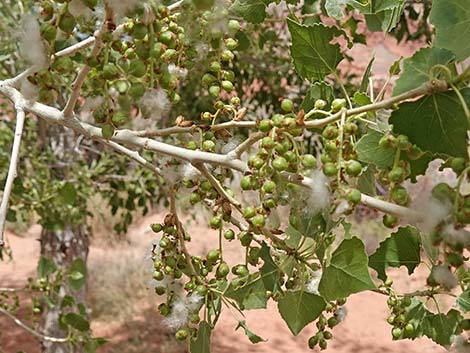 Fremont's Cottonwood capsules opening on tree (female parts) |
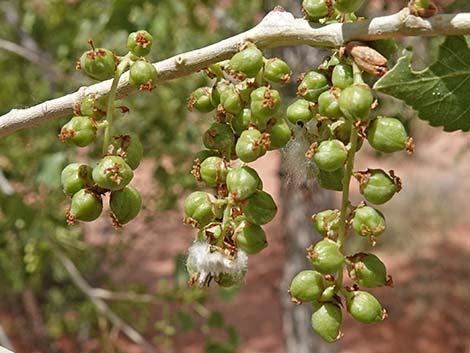 Fremont's Cottonwood capsules starting to open (female parts) |
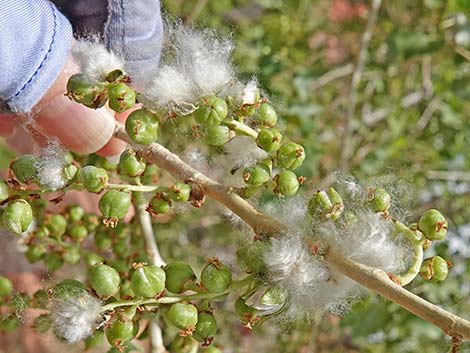 Fremont's Cottonwood capsules shedding cottony seeds (female parts) |
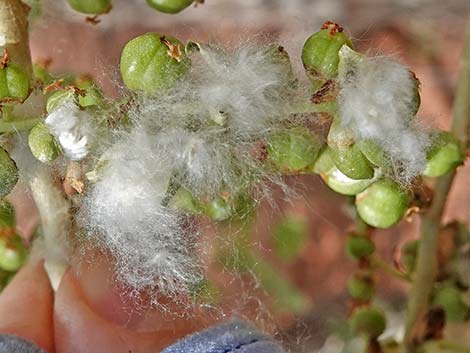 Fremont's Cottonwood capsules shedding cottony seeds (female parts) |
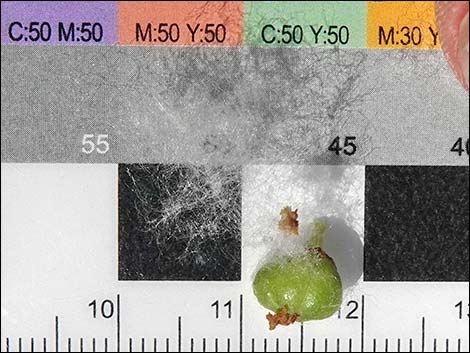 Fremont's Cottonwood capsule and cottony seeds (female parts) |
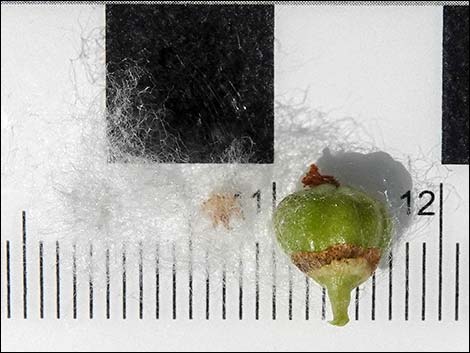 Fremont's Cottonwood capsule and cottony seeds (female parts) |
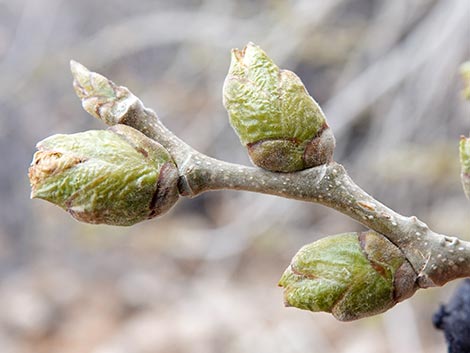 Male flower buds |
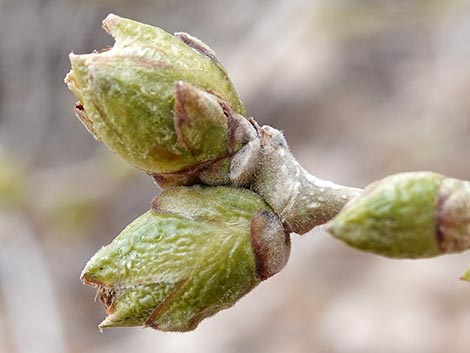 Male flower buds |
 Open male flower buds with male flowers |
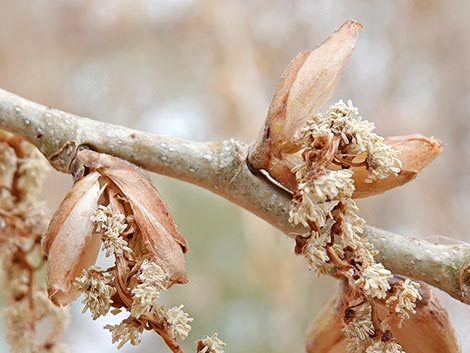 Open male flower buds with male flowers |
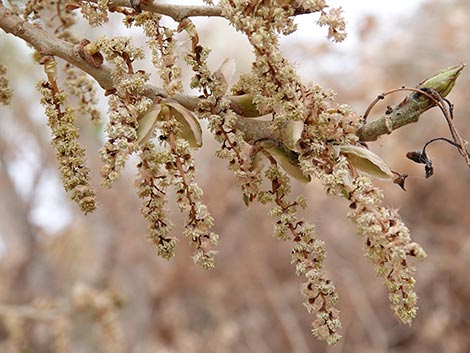 A cascade of male flowers |
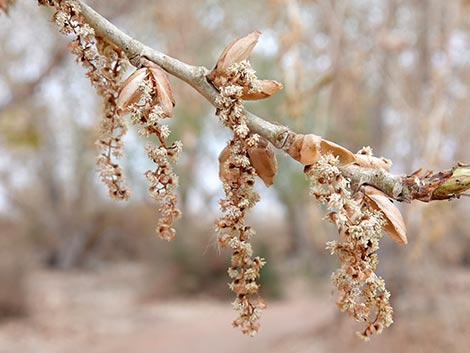 A cascade of male flowers |
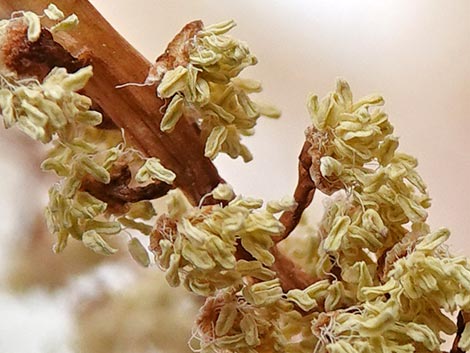 Male flowers: cup-shaped disc with many stamens and anthers |
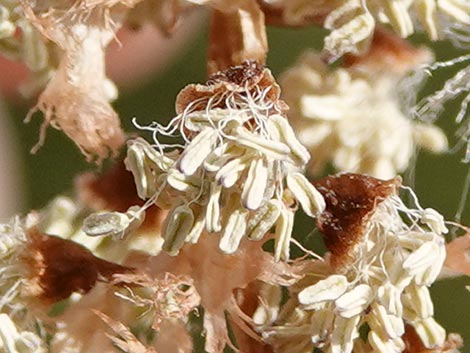 Male flowers: cup-shaped disc with many stamens and anthers |
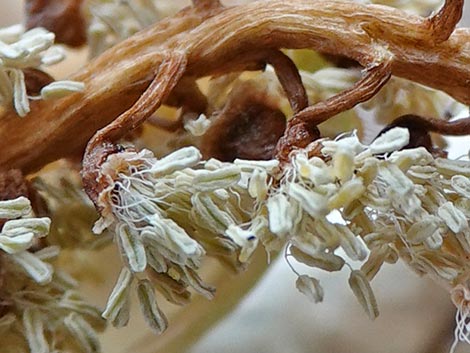 Male flowers: cup-shaped disc with many stamens and anthers |
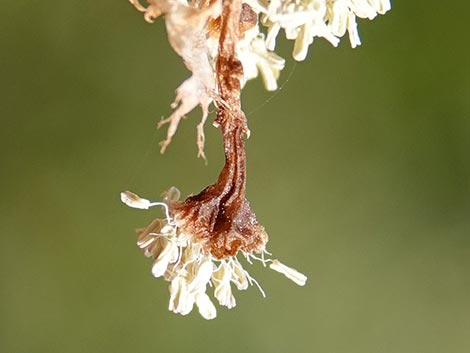 Male flowers: cup-shaped disc with many stamens and anthers |
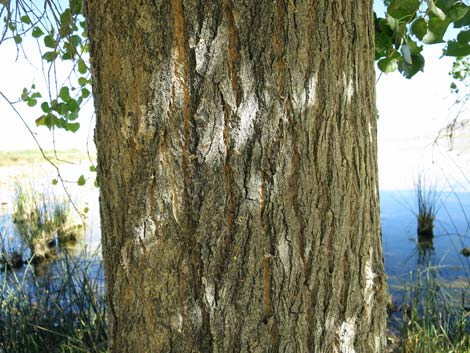 |
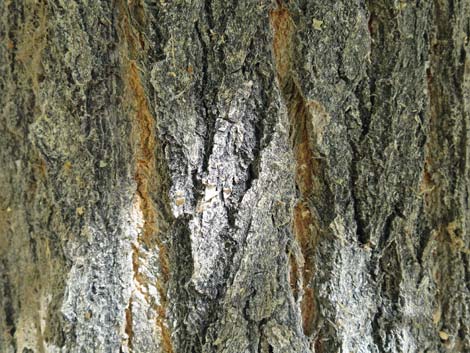 |
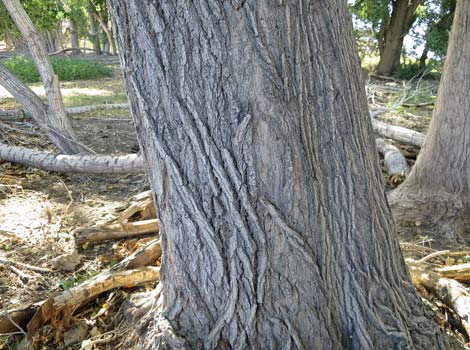 |
 |
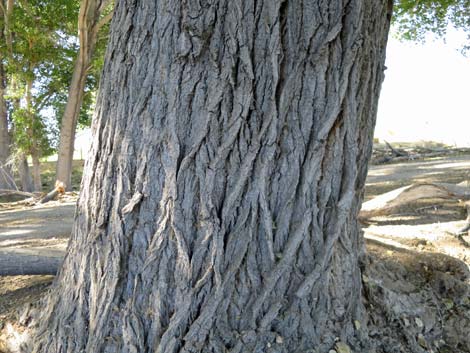 |
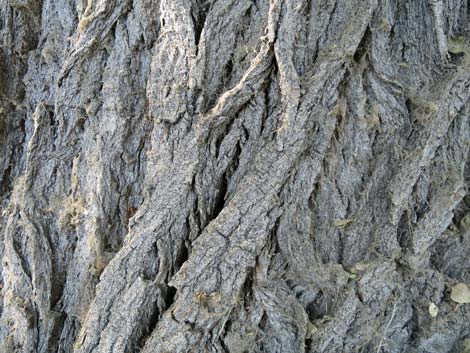 |
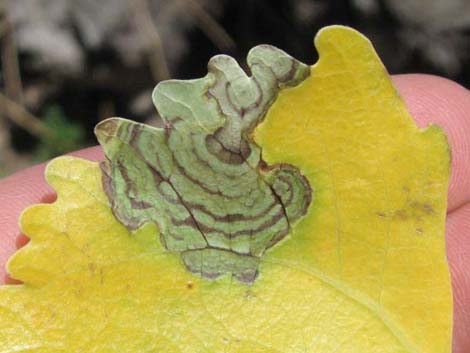 Fall colors |
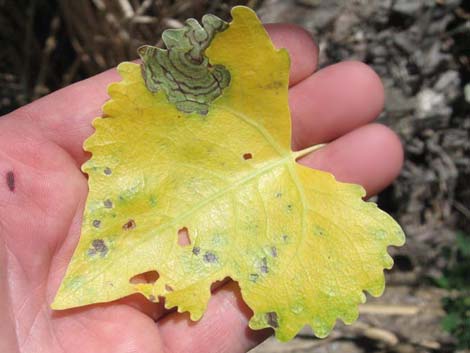 Fall colors |
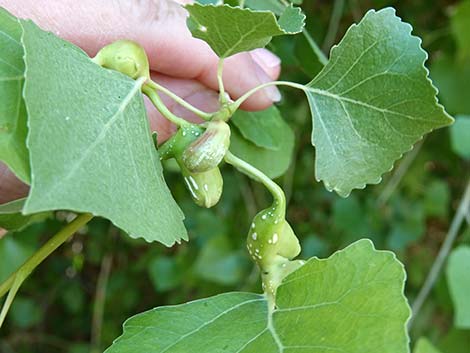 Poplar Petiole Gall induced by Poplar Petiole Gall Aphid (Pemphigus populicaulis) |
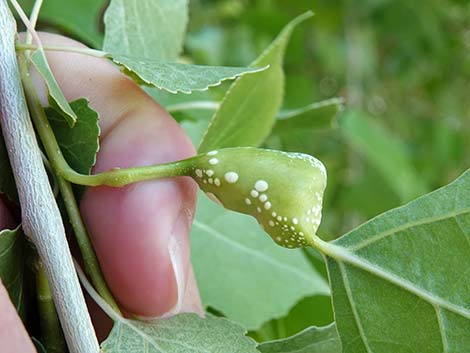 Poplar Petiole Gall induced by Poplar Petiole Gall Aphid (Pemphigus populicaulis) |
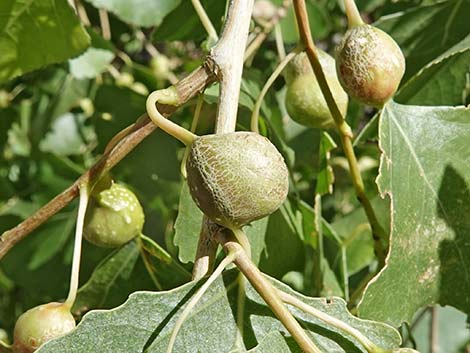 Poplar Petiole Gall induced by Poplar Petiole Gall Aphid (Pemphigus populicaulis) |
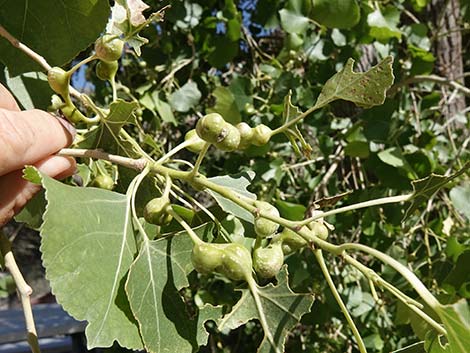 Poplar Petiole Gall induced by Poplar Petiole Gall Aphid (Pemphigus populicaulis) |
Note: All distances, elevations, and other facts are approximate. Names generally follow the USDA database.
![]() ; Last updated 241029
; Last updated 241029
| All Deciduous Trees | Plant Species Index | Glossary | Copyright, Conditions, Disclaimer | Home |